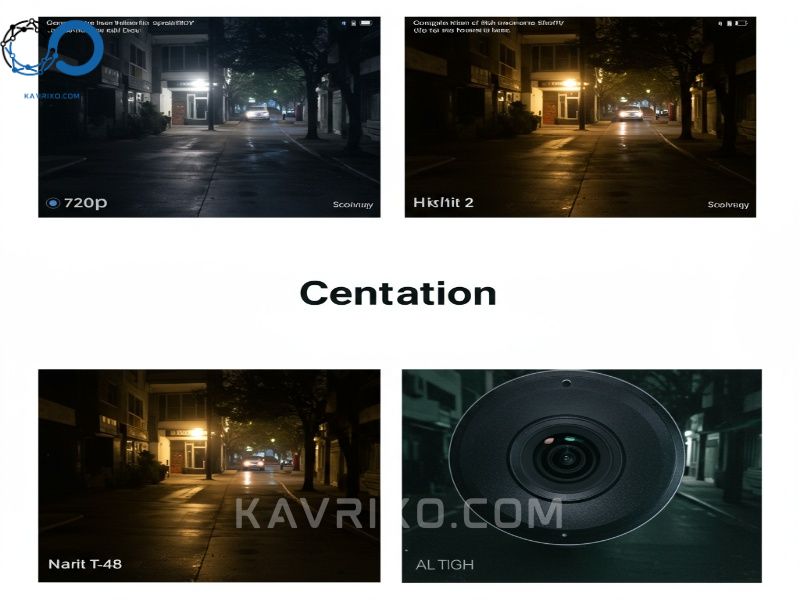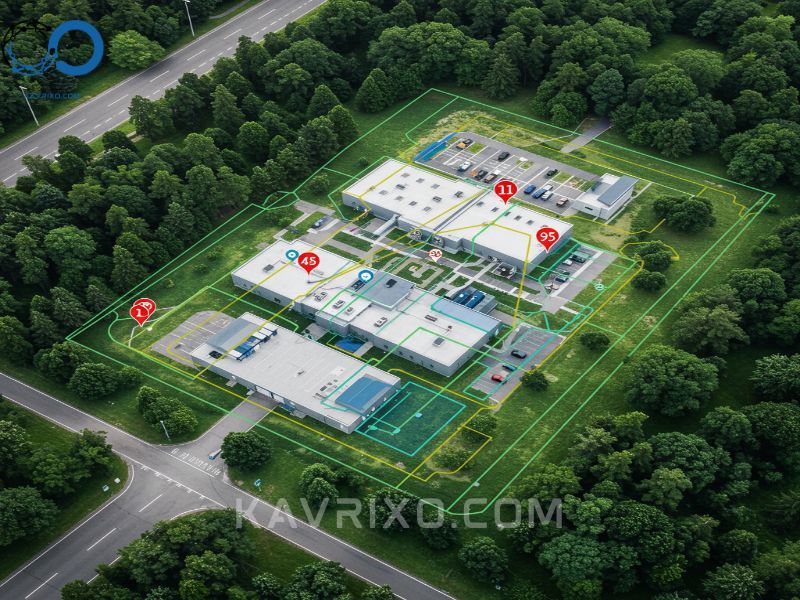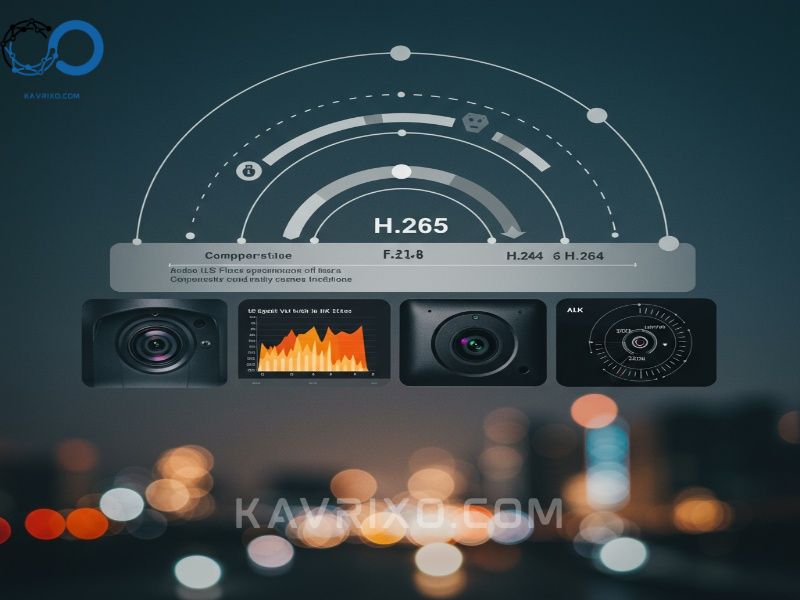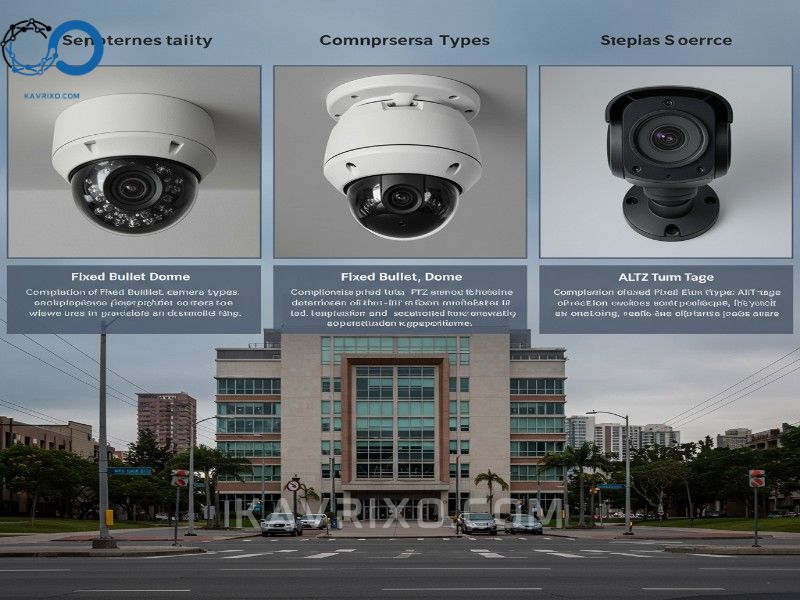In the age of smart homes and connected businesses, security surveillance has moved far beyond blurry, analog footage. Today, the cornerstone of any effective security system is the Internet Protocol (IP) camera. But simply buying an IP camera isn’t enough; the market is flooded with options, ranging from basic home monitors to sophisticated, AI-powered commercial systems. The real challenge is discerning what constitutes a truly good IP camera—one that meets your specific needs for reliability, image quality, and intelligent monitoring.
This comprehensive guide is designed to cut through the noise. We will explore the essential technical specifications, crucial feature sets, and practical considerations necessary to select not just a functional device, but the best IP webcam solution for safeguarding your property, whether it’s a cozy apartment or a large corporate campus.
Contents
- 1 Defining a “Good” IP Camera: Beyond Basic Monitoring
- 2 Key Features That Elevate a Standard Camera to the Best IP Webcam
- 3 Specific Use Cases: Finding the Right Good IP Camera for Your Environment
- 4 Decoding the Technical Jargon: What Specs Really Matter?
- 5 Installation and Setup: Making Your Good IP Camera Operational
- 6 Comparing the Best IP Webcam Types: Fixed vs. PTZ vs. Dome
- 7 Final Considerations Before Purchasing Your Good IP Camera System
Defining a “Good” IP Camera: Beyond Basic Monitoring
When consumers first look for a security camera, the immediate focus is usually price. However, a cheap camera often sacrifices critical performance elements that are essential when you actually need the footage—like clear resolution during an incident or reliable connectivity during bad weather. A good IP camera is defined by its ability to perform consistently under stress, capture actionable evidence, and integrate seamlessly into a larger security ecosystem.
Core Technical Specifications: The Foundation of Quality
The performance of any surveillance camera starts with its core hardware specifications. These details determine the clarity of the image, the smoothness of the video, and the overall reliability of the captured data.
Resolution, Frame Rate, and Field of View
Resolution is arguably the most critical specification. While 1080p (2MP) is the current standard minimum for a good IP camera, modern systems often push toward 4MP, 5MP, and even 4K (8MP). Higher resolution is vital for digital zooming and forensic detail—the ability to clearly identify a face or license plate. A camera with poor resolution might show that an event occurred, but it won’t provide the detail needed for law enforcement.
Frame rate (measured in frames per second, or FPS) dictates the fluidity of motion capture. For most surveillance purposes, 15 FPS is sufficient, but professional systems and areas with high traffic often require 25 or 30 FPS to ensure fast movements, like running or driving, are captured smoothly without blurring.
Finally, the Field of View (FoV) determines how much area the camera can see. This is often dictated by the lens type (fixed, varifocal, or motorized). A wider FoV (lower focal length, e.g., 2.8mm) is excellent for covering a backyard or large room, while a narrower FoV (higher focal length, e.g., 12mm) is better for focusing on a specific entry point, like a doorway or gate.

Connectivity and Installation Flexibility
IP cameras require network connectivity to transmit data. The choice between Power over Ethernet (PoE) and Wi-Fi connectivity fundamentally impacts installation, reliability, and cost.
PoE Cameras: These transmit both power and data over a single Ethernet cable. This is the preferred method for any truly good IP camera system, especially professional installations and outdoor IP camera setups. PoE offers superior reliability, faster data transfer speeds, and eliminates the need for nearby power outlets, simplifying exterior wiring immensely.
Wi-Fi Cameras: These are popular for residential and DIY setups due to their ease of installation. However, they require a stable Wi-Fi signal and still need a separate power source. While convenient, Wi-Fi can be susceptible to interference, latency, and drops, which can compromise security footage when you need it most.
Durability and Environmental Factors
If your security needs extend beyond the interior, the durability of the equipment is non-negotiable. An outdoor IP camera must withstand the elements year-round.
Camera durability is measured primarily using two standards:
- IP Rating (Ingress Protection): This two-digit code rates resistance against solids (dust) and liquids (water). For outdoor use, look for an IP66 rating (dust-tight and protected against powerful jets of water) or IP67 (immersion proof up to 1 meter).
- IK Rating (Impact Protection): This rating measures resistance to physical vandalism or impact. Cameras used in publicly accessible areas or locations prone to tampering should have a high IK rating (e.g., IK10), indicating they can withstand significant force.
A good IP camera designed for exterior use must meet these standards to ensure continuous operation regardless of severe weather, making durability a key differentiator between consumer-grade and professional-grade equipment.
Key Features That Elevate a Standard Camera to the Best IP Webcam
Hardware specs provide the foundation, but modern security relies heavily on smart features and advanced software capabilities. These intelligent additions save time, reduce false alarms, and dramatically increase the effectiveness of your surveillance system, turning a standard IP camera into the best IP webcam tailored for proactive security.
Advanced Video Analytics and AI Detection
The biggest revolution in modern surveillance is the integration of Artificial Intelligence (AI) and intelligent video analytics. Older systems relied on basic motion detection, which triggers alerts based on any pixel change—meaning wind, rain, insects, or shadows caused constant false alarms.
A truly good IP camera utilizes advanced analytics, which includes:
- Human/Vehicle Detection: The camera can differentiate between a person, a car, and irrelevant motion (like a falling leaf or an animal). This drastically reduces alert fatigue and ensures you are only notified of relevant security events.
- Intrusion Detection/Line Crossing: Defining virtual boundaries that trigger an alarm only when an object crosses them in a specific direction.
- Facial Recognition and LPR (License Plate Recognition): High-end systems can identify specific individuals or capture detailed license plate images, essential for commercial security and advanced access control.
AI processing is often done either on the camera itself (edge computing) or through the network video recorder (NVR). Edge computing, favored by the best IP webcam models, allows the camera to filter data before sending it over the network, reducing bandwidth strain.

Night Vision Capabilities: Seeing in the Dark
The majority of security incidents occur under the cover of darkness, making high-quality night vision indispensable. There are three main technologies powering low-light surveillance:
Infrared (IR) Night Vision
This is the standard. IR LEDs illuminate the scene with infrared light (invisible to the human eye). The image captured is clear but monochromatic (black and white). The range and quality of IR illumination vary widely; look for “Smart IR” technology, which automatically adjusts the intensity of the IR light to prevent overexposure of objects close to the lens.
Starlight Technology
Starlight cameras utilize highly sensitive image sensors and wide apertures to capture usable color images even in extremely low light conditions (e.g., moonlight or dim streetlights). This provides significantly more useful forensic evidence, as color information (like clothing or vehicle colors) is retained.
Color Night Vision / Warm Light
Some advanced outdoor IP camera models incorporate small, visible LED spotlights (sometimes called “warm light” or “white light”) that turn on when motion is detected. This keeps the image in full color, acts as a visual deterrent, and often results in the clearest nighttime footage. While effective, the bright light can be disruptive in residential settings.
Storage Solutions: Local vs. Cloud
Where your footage is stored is just as important as how it’s captured. A good IP camera system offers redundancy and flexibility in storage options.
Network Video Recorders (NVRs)
For systems involving multiple cameras, especially commercial and high-end residential setups, an NVR is essential. NVRs record footage locally onto hard drives, offering large storage capacity and usually integrating the necessary software for managing, viewing, and backing up video feeds.
MicroSD Cards (Edge Storage)
Many individual IP cameras, particularly those marketed as the best IP webcam for DIY use, include a MicroSD slot. This allows for local, continuous, or event-based recording, acting as a reliable backup even if the internet connection temporarily fails.
Cloud Storage
Cloud subscriptions offer offsite backup, protecting footage even if the camera or NVR is stolen or damaged. While convenient and often easy to set up, cloud services typically involve monthly fees and rely entirely on a stable, high-speed internet connection.
Specific Use Cases: Finding the Right Good IP Camera for Your Environment
The ideal camera system differs drastically depending on whether you are monitoring a suburban home or a sprawling warehouse. Understanding the environment dictates the required feature set, durability, and scalability.
Residential Security: Simplicity and Integration
Home users prioritize ease of use, aesthetic discretion, and integration with existing smart home ecosystems (like Alexa or Google Home).
A good IP camera for residential use should:
1. Offer straightforward installation (often Wi-Fi or simple PoE).
2. Provide reliable human/pet detection to minimize false alerts.
3. Include two-way audio for communication with delivery people or visitors.
4. Be relatively discreet, especially if placed indoors.
For homeowners, selecting the best IP webcam often involves choosing a brand known for seamless app experience and strong customer support, rather than focusing solely on commercial-grade technical specs.
Commercial Applications: Scalability and Professional Features
Business security requires robust performance, high density of coverage, and strict regulatory compliance. The system must be scalable, supporting dozens or even hundreds of cameras managed centrally by an NVR or VMS (Video Management Software).
Commercial requirements often include:
- High Megapixel Count: Necessary for monitoring large areas like parking lots or warehouse floors where digital zooming is critical.
- Centralized Management: Ability to manage user access, view multiple streams simultaneously, and perform rapid footage retrieval.
- Tamper Detection: Alerts triggered if the camera view is obstructed or if the camera is physically moved.
- Cybersecurity Focus: Cameras must offer enterprise-level encryption and security protocols to protect sensitive network data.

The Importance of a Robust Outdoor IP Camera System
The perimeter is the first and most crucial line of defense. Investing in a specialized outdoor IP camera is non-negotiable for exterior monitoring. These cameras face unique challenges: extreme temperatures, direct sunlight, rain, snow, and potential tampering.
When evaluating an outdoor IP camera, ensure it offers:
- Wide Operating Temperature Range: Standard indoor cameras often fail when temperatures drop below freezing or rise above 110°F. Outdoor models must handle these extremes.
- Integrated Heater/Blower: High-end models may include internal heaters to prevent fogging and ensure reliable operation in sub-zero climates.
- Vandal Resistance (IK Rating): Essential for cameras mounted low or in easily accessible areas.
- Excellent WDR (Wide Dynamic Range): This feature compensates for extreme lighting contrasts, such as bright sunlight shining behind a person entering a shaded area (backlighting). WDR ensures both the bright and dark areas of the scene are properly exposed, providing clear detail.
Decoding the Technical Jargon: What Specs Really Matter?
Beyond the basic numbers, several complex technical specifications directly impact the performance, cost, and long-term viability of your surveillance system. Understanding these helps you select a truly good IP camera that is efficient and secure.
Compression Standards (H.265 vs. H.264)
IP cameras transmit huge amounts of data. To make this feasible without overwhelming your network, video streams are compressed.
- H.264 (AVC): The older, standard compression codec. It produces large file sizes relative to newer methods.
- H.265 (HEVC): The current preferred standard. H.265 can reduce file size and bandwidth consumption by up to 50% compared to H.264 without sacrificing image quality. For high-resolution cameras (4MP and above), H.265 is essential for manageable storage and network traffic.
- H.265+ (Proprietary Enhancements): Some major manufacturers offer enhanced versions that further optimize storage by strategically reducing the frame rate of static scenes, only boosting it when motion occurs.
If you are aiming for the best IP webcam experience with 4K resolution, ensuring the device supports H.265 is critical for minimizing NVR storage costs and network burden.

Bandwidth Consumption Management
Every good IP camera on your network consumes bandwidth. A poorly planned system can slow down your entire home or business internet connection.
When calculating bandwidth needs, you must consider:
- Bitrate: The amount of data transmitted per second (measured in kilobits per second or Kbps). A higher bitrate usually means better quality but higher consumption.
- Number of Streams: Many cameras transmit a high-resolution stream for recording and a lower-resolution sub-stream for live viewing on mobile devices.
Professional systems allow you to adjust the bitrate for each camera to optimize performance. For instance, a low-priority indoor storage camera might run at a low bitrate, while a critical outdoor IP camera at an entrance runs at the highest possible bitrate.
Cybersecurity and Privacy Protections
The “IP” in IP camera means it’s a network device, making it a potential entry point for hackers if not secured properly. A responsible manufacturer of a good IP camera prioritizes security.
Key security features to look for include:
- WPA2/WPA3 Encryption: Mandatory for Wi-Fi cameras.
- Mandatory Strong Passwords: The camera should force you to change the default password immediately upon setup.
- Firmware Updates: The manufacturer must regularly release firmware updates to patch vulnerabilities. Check the company’s track record.
- 2-Factor Authentication (2FA): Essential for accessing your footage remotely via the mobile app.
Ignoring security turns your best IP webcam into a serious liability. Always segregate your security network onto a separate VLAN (Virtual Local Area Network) if possible, especially in commercial settings.
Installation and Setup: Making Your Good IP Camera Operational
Even the most advanced hardware can fail if the installation or network configuration is subpar. A successful security deployment requires meticulous planning.
Network Requirements and Configuration
For PoE systems, you will need a PoE switch or NVR with integrated PoE ports. Ensure your network equipment can handle the cumulative power draw (PoE budget) of all cameras, especially if you select powerful models with heaters or motorized zoom functions.
For Wi-Fi cameras, map out your signal strength. If the desired camera location (especially for an outdoor IP camera) has weak Wi-Fi, you may need to install range extenders or mesh network nodes to ensure a stable connection.
Crucially, regardless of connectivity type, most cameras require a constant upload speed to stream data reliably, particularly if you rely on cloud storage or remote viewing. Check your internet service provider’s speeds.

Choosing the Right Mounting Location
Proper camera placement maximizes coverage and minimizes vulnerabilities.
- Height: Mount cameras high enough (typically 8–12 feet) to prevent easy tampering but low enough to capture clear facial details.
- Angle: Aim the camera slightly downwards (around 30–45 degrees) to cover the ground area where intruders walk. Avoid aiming directly into the sun or into bright streetlights, which can trigger WDR and affect picture clarity.
- Coverage Over Detail: For areas like driveways or backyards, prioritize wide coverage. For pinch points like doorways or safes, prioritize detailed, narrow views.
When installing an outdoor IP camera, always ensure the cable runs are protected from rodents and weather, utilizing conduit or interior wall access where possible.
Comparing the Best IP Webcam Types: Fixed vs. PTZ vs. Dome
The physical form factor of the camera dictates its utility and visibility.
Fixed Cameras: Reliability and Value
Fixed cameras (bullet or dome) are the most common and generally the most reliable. Once aimed, the field of view remains constant.
- Bullet Cameras: Highly visible, acting as a strong deterrent. Excellent for long-distance viewing and often the preferred form factor for high-end outdoor IP camera systems due to easier aiming and better resistance to rain pooling on the lens shield.
- Fixed Dome Cameras: More discreet and harder to tamper with (due to their enclosure), making them excellent for both indoor and vandal-prone outdoor locations.
PTZ Cameras: Coverage and Flexibility
Pan-Tilt-Zoom (PTZ) cameras are motorized, allowing the user (or AI software) to remotely adjust the viewing angle, tilt, and optical zoom. These cameras are ideal for monitoring vast areas like parking lots or construction sites.
While PTZ cameras offer unparalleled flexibility, they have drawbacks:
- Cost: Significantly more expensive than fixed cameras.
- Blind Spots: A PTZ camera can only monitor one area at a time. If it’s zoomed in on one side of a property, it is blind to events occurring elsewhere.
A good IP camera system usually relies on a network of fixed cameras for constant, reliable coverage, supplemented by one or two PTZ units for patrol and investigation.
Final Considerations Before Purchasing Your Good IP Camera System
Before finalizing your purchase, take a moment to evaluate the long-term cost and support structure.
1. Ecosystem Compatibility: Are you buying into a proprietary system (which might limit future camera additions) or an open standard (like ONVIF, which allows cameras from different brands to work together)? For maximum flexibility and future-proofing, look for ONVIF compatibility.
2. Warranty and Support: Since IP cameras are often deployed in harsh environments and run 24/7, manufacturer support and warranty length are crucial. A company confident in its outdoor IP camera quality will offer a multi-year warranty.
3. Total Cost of Ownership (TCO): Calculate not just the camera price, but the cost of the NVR, hard drives, PoE switches, professional installation (if applicable), and any recurring cloud storage or advanced feature subscription fees. Sometimes, paying slightly more upfront for a best IP webcam with robust local storage capabilities can save significant money in monthly fees later on.
By carefully assessing these technical and practical considerations, you can move beyond simply buying a functional device and invest in a truly good IP camera system—one that delivers reliable, intelligent, and actionable security for years to come.

